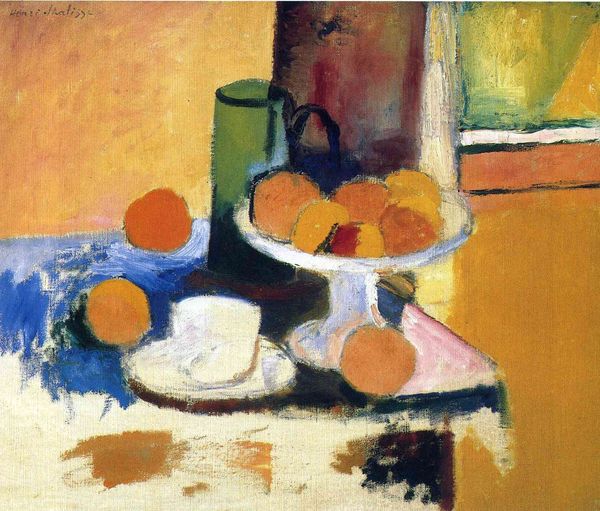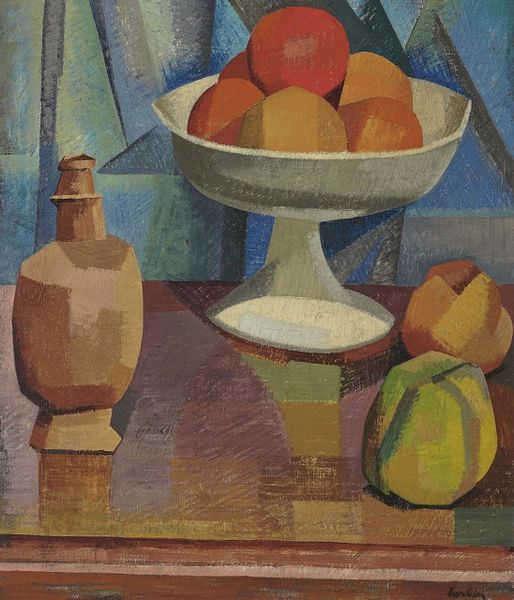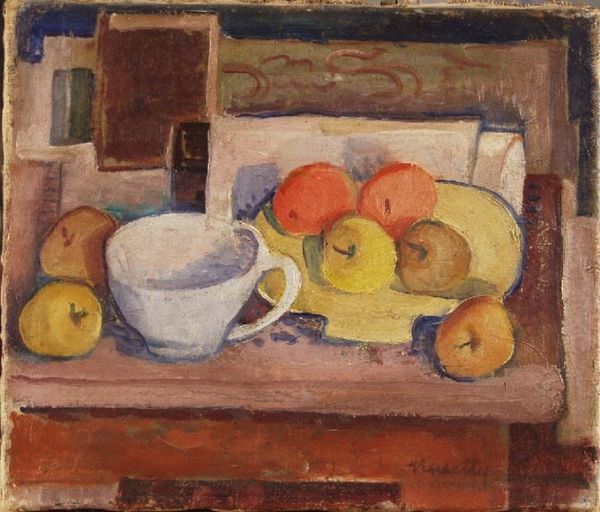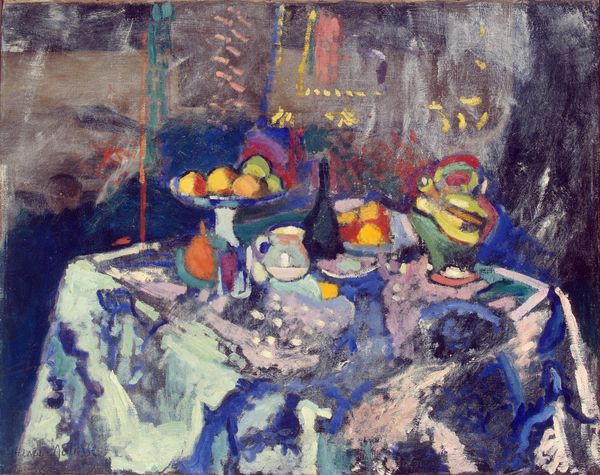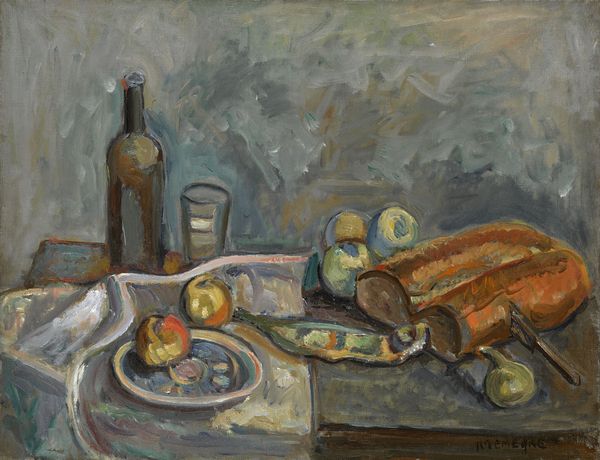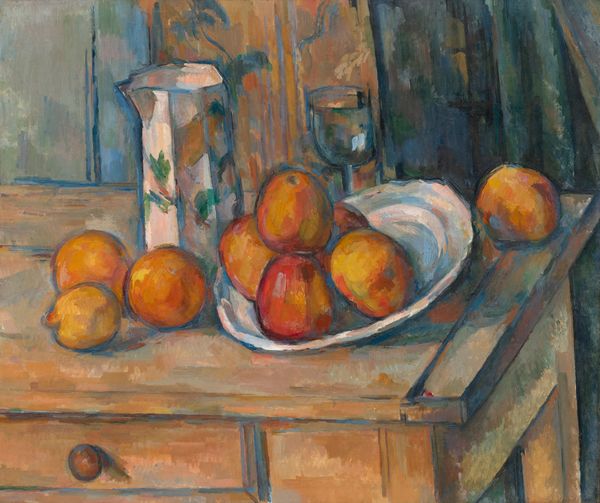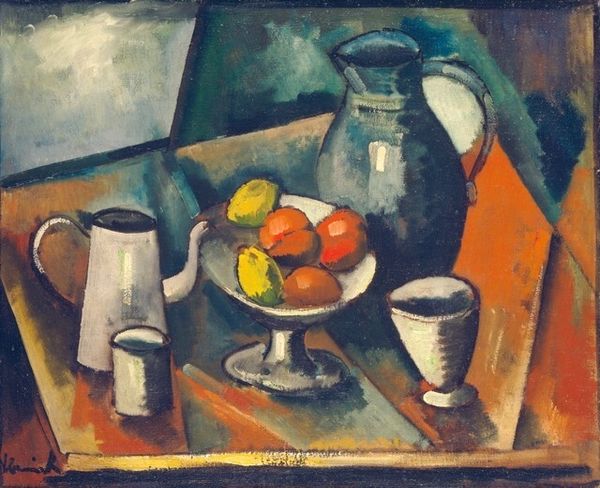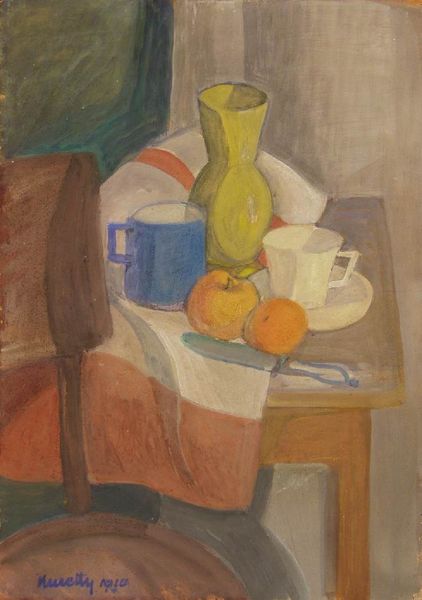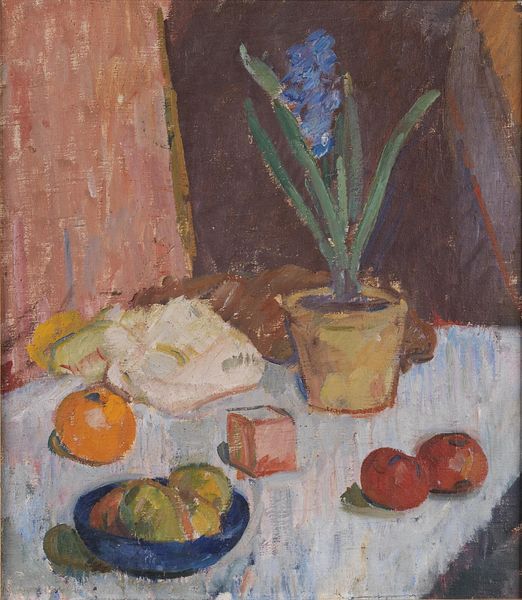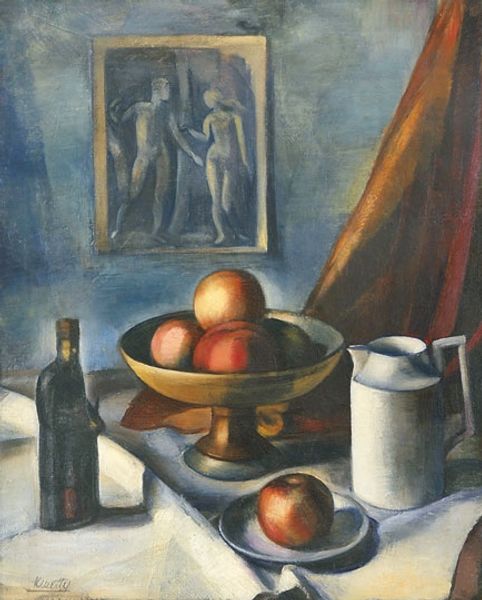
oil-paint
#
cubism
#
oil-paint
#
oil painting
#
geometric
#
modernism
Copyright: Kmetty János,Fair Use
Curator: Looking at this 1930 oil painting titled "Still Life" by Kmetty János, the first thing that strikes me is how much the angular forms unsettle the typical domestic tranquility one usually expects from still life paintings. Editor: It is disorienting. There is something about the geometric reduction of familiar objects and that limited palette—blues, reds, oranges—that makes the work visually arresting and emotionally ambiguous. Curator: János’s use of cubist techniques here is fascinating. Consider how objects intersect, planes tilt and how different perspectives blend. It isn’t merely a study of form but also a commentary on perception. János painted this during a tumultuous interwar period. The fractured forms might reflect the anxieties and shattered social order of that era. Editor: True, there's a conceptual elegance to how János balances the composition by contrasting fragmented geometric blocks, which gives the whole scene a structural integrity, like the table anchoring the items. Yet, those stark angles of the knife edge do hint at a violence that challenges a conventional understanding of beauty in art, making a radical claim. Curator: Indeed. While seemingly detached, still life has never just been about surfaces. The inclusion of everyday items carries meaning and János is perhaps inviting us to question what it means to extract objects from domestic spaces only to fragment them onto a canvas, devoiding them of their ordinary functions. Editor: I do enjoy pondering what it is supposed to represent, but to me it goes beyond that. It captures a unique optical dynamism. I find pleasure simply looking at those forms interact. Curator: So, you are suggesting that perhaps it stands as a document, evidencing both its moment and, because of the reduction, an element of universality to it. Editor: Precisely. I find that János delivers visual innovation and forces us to rethink our visual presumptions on a much more elemental level.
Comments
No comments
Be the first to comment and join the conversation on the ultimate creative platform.
